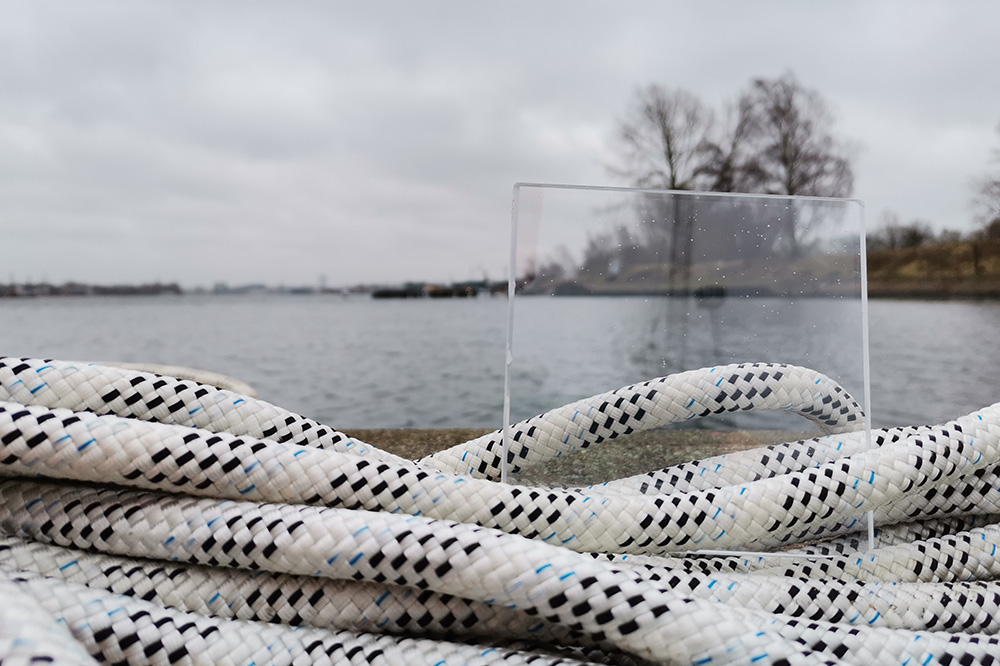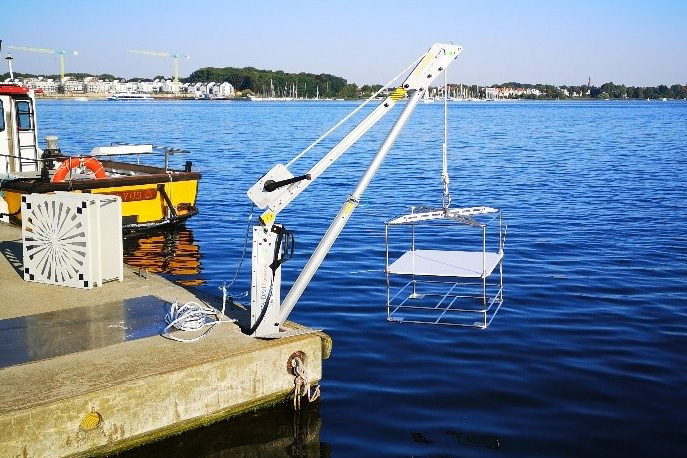

The undesired colonization of artificial surfaces with microorganisms, so-called fouling, represents a major challenge in the marine industry with ecological and financial consequences. For example, structures, such as foundation structures for offshore wind turbines, are affected and their stability and durability are limited. Fouling can also affect the performance of ships and increase energy consumption. Therefore, Fraunhofer IKTS, with its core competence in the field of high-performance ceramics, is dedicated to the development of new materials with antifouling properties to counteract this problem. Ceramics in particular are characterized by durability and ecotoxicological harmlessness and can be used under harsh environmental conditions.
The adhesion of bacteria to the surface of marine systems takes place within a very short time in the sea. This so-called fouling begins with the accumulation of organic molecules and the formation of a biofilm, which favors the further settlement of algae and various soft- and hard-shelled organisms. To prevent this, antifouling paints with organometallic compounds (tributyltin) and other biocides were initially used. These types of antifouling coatings are now banned because the biocides are released into the surrounding waters and have a detrimental effect on aquatic organisms. However, the currently widely used alternative, consisting of antifouling paints with copper compounds, is also highly controversial in terms of its environmental compatibility and is already banned in some EU countries. Therefore, it is necessary to develop environmentally friendly as well as biocide-free materials and coatings for the fouling protection of maritime structures. Since the maritime environment places high demands on technical surfaces, ceramic materials and components, which are typically used under demanding tribological and corrosive conditions, are also advantageous from this point of view.
Ceramic materials and coatings can be specifically adapted to the corresponding application area. On a physical level, modifications can be created in the form of defined structures on the surface tailored to the critical dimensions of a fouling organism. This allows the number of favorable adhesion points to be limited and provides improved antifouling properties. While this approach is suitable for the protection of buildings and the like, the transparency of the material must be fully preserved for sensor applications. In addition to defined structures, it is also possible to produce particularly smooth layers which, for example, have antifouling properties due to their hydrophobicity.
However, ceramic components are not only modifiable in their physics, but they can also be changed in chemical composition to achieve desired properties. Thus, due to the versatile variations of ceramics, materials can be developed for a wide range of applications, e.g. thermally sprayed and laser-sintered ceramic coatings.
To validate the generated materials and surface modifications, analytical tests are carried out in the laboratory environment at our Dresden site and supplemented by tests on outdoor weathering testbeds. The advantage of real tesbeds compared to pure laboratory tests is that the newly developed materials can be tested under conditions that are very close to the actual application and that the challenges of real fouling and corrosion conditions can be directly included in the evaluation in this way.